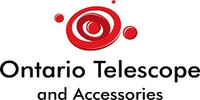The Power of Precision: Bahtinov Focus Masks in Astronomy
Posted by - S. Mallia on 2023 Jul 1st
As an astronomy enthusiast, you've likely experienced the frustrations of attempting to focus your telescope for the clearest image of celestial bodies. The struggle is real, but it doesn't have to be - not if you have a Bahtinov focus mask at your disposal. Named after Pavel Bahtinov, the Russian amateur astronomer who introduced it, this handy tool has revolutionized the way we focus our telescopes, especially for astrophotography.
A Bahtinov mask is essentially a thin disk with a specific pattern of slots cut into it. When placed over the aperture of a telescope, this pattern creates an intricate set of diffraction spikes when light passes through it. These spikes, viewable through your eyepiece or camera, serve as a guide for precision focusing. As you adjust the focus of your telescope, the central diffraction spike moves. When this spike aligns perfectly between the other two, you've achieved optimal focus. The process is incredibly accurate and much more intuitive than trying to judge focus based solely on the sharpness of the object you're observing. The Bahtinov mask shines especially brightly in the world of astrophotography. Here, precision focus is paramount. Even a slight misstep in focusing can turn a potential masterpiece into a blurry disappointment.
Using a Bahtinov mask eliminates a lot of guesswork from the process. You no longer need to scrutinize your images for sharpness. Instead, you can simply align the diffraction spikes and trust that your focus is as sharp as it can be. Start by placing the focusing mask on the telescope Once the camera is attached, we can proceed to install the focus mask on the telescope. The mask should cover the front end of the telescope, and it should be centered and aligned properly.
Now it's time to adjust the focus using the mask. By slightly defocusing the image, we can observe the diffraction patterns created by the mask. You might need to increase the magnification on your DSLR screen to see the spikes if you are not using a laptop. The goal is to find the point where the patterns converge, indicating that the focus is accurate.
After finding the point of convergence, we can fine-tune the focus by making small adjustments to the focus knob or wheel on the telescope. We are looking for the center spike to be in the exact center of the two outside spikes. It is important to take our time during this step and make gradual changes, as sudden movements can throw off the focus.
Once we have obtained a clear and sharp image, we have achieved optimal focus for astrophotography. It is recommended to check the focus periodically during the imaging session to ensure it remains consistent.
Using a mask for focusing offers several benefits for astrophotography enthusiasts. Firstly, it enhances accuracy in achieving focus, as it provides a clear visual indication of the converging diffraction patterns. Secondly, it helps reduce image distortions and aberrations, resulting in sharper and more detailed images. Lastly, using a mask improves overall image quality by ensuring precise focus is achieved. This can save you precious time during those limited periods of clear, dark skies.
Bahtinov masks are typically designed for specific telescope models, but if you're handy with tools and materials, you can certainly make one yourself. There are various online guides and templates available. On the other hand, the commercial options are plentiful and relatively inexpensive. Whether you choose DIY or buy, the addition of a Bahtinov mask to your astronomy toolkit is a game-changer. If you need one for a specific focal length or aperture let us know, and we can laser cut one for your specific needs.
In the end, anything that helps us connect more seamlessly with the celestial wonders above us is a worthy addition to our astronomy toolkit. The Bahtinov focus mask is a marvel of simple yet effective design, providing precision focusing in a user-friendly way. As with any tool, it may take a bit of practice to use effectively, but once mastered, you'll wonder how you ever did without it.
Join the ranks of the many astronomers and astrophotographers who swear by their Bahtinov masks. With one in hand, the only limits are the ones imposed by the weather and the extent of the universe itself.

